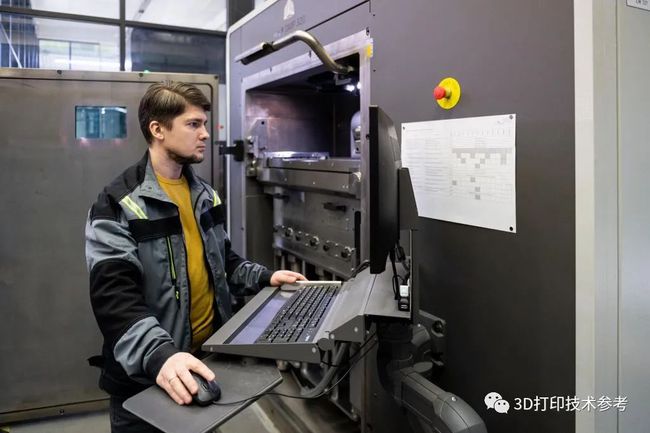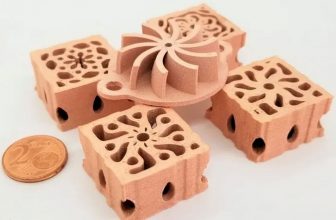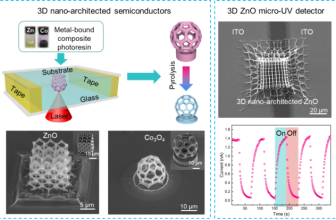
On October 10, according to the official website of the Russian State Technology Group, the Additive Technology Center of the Russian Technology Group became the first enterprise in Russia to obtain the approval of the Russian Ministry of Industry and Trade to carry out the 3D printing and manufacturing of aviation components and other parts in batches.
Vladislav Kochkurov, general manager of the Additive Technology Center of the Russian Technology Group, said that the aviation manufacturing industry with high safety requirements is one of the knowledge-intensive industries. This is the development of additive technology and the Russian aviation manufacturing industry. A new and important stage of
At present, the Additive Technology Center of the Russian Technology Group is the largest 3D printing equipment park in Russia, with 41 additive and auxiliary equipment, capable of producing 450 parts.
Rostec said that it is using 3D printing technology to produce PD-35 engine parts. This high-thrust aero engine will be used in the CR929 Russian-Chinese wide-body passenger aircraft.
Russia’s first batch of 3D printed aviation parts
Compared with Russia, China’s development and application of 3D printing technology can be proved by similar data. The 3D printing technology reference has been summarized:
On November 8, Blite, a well-known domestic metal additive manufacturer, announced that its 3D printing service plant SLM equipment reached 200 units.
On October 11, Xinjinghe, a well-known metal additive manufacturer in China, was reported on CCTV News Network to have received hundreds of millions of investment from the Advanced Manufacturing Industry Investment Fund of the National Development and Investment Group. The factory has more than 180 metal 3D printers.
On May 18th, Steel Research Aurora, a holding subsidiary of China Iron and Steel Research Technology Group, which focuses on the aerospace and civil alloy parts additive manufacturing business, held a production ceremony. The company will invest a total of 1 billion yuan.
It is planned that by 2025, the installed capacity of 3D printing equipment will reach 150-200, and the mass production of key products will be completed.
In May 2020, Falconn announced the creation of a world-class additive manufacturing super factory, planning more than 50 equipment, and plans to invest twice as much equipment for industrial production from 2022 to 2023. By then, the number of metal 3D printers will reach 100. tower.
By then, the number of domestic equipment for metal 3D printing services is conservatively estimated to exceed 600 units. Although the application fields between the equipment are not limited to aerospace, the scale is still huge.
Considering the cost and processing effect comprehensively, aerospace has become the best application field for 3D printing. For a new processing technology, the core consideration for an enterprise is cost and processing effect.
If a lower cost achieves the same processing effect or a higher cost achieves a better processing effect, there is room for application. However, the aerospace field is relatively insensitive to costs, and the advantages of 3D printing are significantly magnified. .
Regardless of the current situation or the future layout, if there is no mass application as the prerequisite, it is almost impossible to make such a large-scale investment in China.
According to 3dpbm data, the global aerospace additive manufacturing market space is expected to grow from USD 3 billion in 2020 to USD 17 billion in 2030, maintaining a compound annual growth rate of 19.36%.
This includes additive manufacturing equipment, materials and related products, and the equipment market is expected to maintain a growth rate of nearly 13%.
The aerospace field provides unlimited space for 3D printing applications
Technological progress has promoted the continuous improvement of 3D printing’s breakeven output compared with traditional processing methods. Before pursuing large-scale production with technological innovation, 3D printing is usually only economical when the output is low.
Therefore, it is suitable for small batch manufacturing with customization and rapid design iteration. With the continuous breakthroughs in current equipment, materials, and service provider technologies,
3D printing has gradually become economical in mass production. The “Additive Manufacturing 2.0” with mass production capacity will usher in a decade of rapid development for 3D printing.
At the same time, with the comprehensive transformation of my country’s national defense strategy, the pace of aerospace equipment upgrades is expected to accelerate, and the manufacturing of aerospace components is on the rise.
As the national “14th Five-Year” plan will focus on the new generation of aviation equipment, precision strike weapons, unmanned equipment and information equipment, the new generation of aerospace equipment and precision strike weapons will enter the stage of batch equipment.
At the same time, with the deepening of the military-civilian integration reform, the general capacity and production capacity of OEMs will be further released to upstream private enterprises.
In terms of missile development and manufacturing, the unique lightweight manufacturing features of 3D printing can improve the efficiency of missile use.
According to the People’s Liberation Army News, 3D printed missiles can not only reduce costs compared with traditional manufacturing methods, but also greatly shorten the design and update time of missile parts. 3D printing technology also lifts various restrictions in warhead manufacturing and can improve The thermodynamic properties of the missile and tried a design that could not be used before.
As early as 2016, companies such as Raytheon and Lockheed Martin have tried to find new ways to manufacture missile parts through 3D printing. According to public information, the missile warhead can be reduced by 1KG in weight, which can increase the range of 12 to 15km.
Therefore, it is believed that 3D printing can significantly improve the performance of missiles, and the demand in this field is expected to continue to increase. According to information from the Ministry of National Defense, in the first half of 2021, the basic training intensity of the entire army has increased significantly, the consumption of ammunition has increased significantly, and the procurement volume is expected to continue to rise.
The Second Academy of Aerospace Science and Technology of China uses 3D printing technology to achieve an important milestone in the development of aircraft
In terms of military aircraft R&D and manufacturing, my country’s new generation of military aircraft has widely adopted 3D printing technology.
my country’s first carrier-based fighter J-15, multi-purpose fighter-bomber J-16, first domestic stealth fighter J-20 and fifth-generation fighter J-31 have generally used 3D printing technology in the research and development and manufacturing.
Rostec also pointed out that the use of industrialized 3D printing can shorten the manufacturing time of certain parts from 6 months to 3 weeks. The parts manufactured by 3D printing are lighter with the same performance, which is expected to increase the load of the aircraft and optimize the flight characteristics.
Professor Li Daguang of the Department of Military Logistics and Military Technology and Equipment of the National Defense University said that in the 1980s and 1990s, it took at least 10-20 years to develop a new generation of fighter jets, and with the help of 3D printing technology, it only took at least 3 years. Finish.
At present, my country’s advanced fighters are in the stage of high-speed installation, freeing up incremental space for 3D printing technology to manufacture parts in batches.
3D printing application on the pterosaur drone, source: 2021 Additive Manufacturing Material Innovation Development Forum live broadcast
In terms of civil aircraft R&D and manufacturing, additive companies such as Bright and Falcon have participated in the trial production of parts and components of the C919 demonstrator, ensuring the success of the first flight.
At the same time, Blite has subsequently prepared nearly 20,000 parts and components for various domestically-made aircraft, most of which have been installed and used.
According to COMAC’s market forecast annual report, China’s new aircraft delivery value will reach US$1.33 trillion from 2020 to 2039, making it the world’s largest passenger aircraft new aircraft delivery market. The additive manufacturing industry is expected to fully benefit from China’s passenger aircraft development market.
3D printing ensures the successful first flight of C919
The aerospace field provides unlimited space for 3D printing applications. From the Long March 5B carrier rocket, “Chang’e” series to a new generation of manned spacecraft and Mars probes,
From small to structural support, engine parts, to the main bearing outsole, 3D printed parts have passed ground tests and various environmental assessments, and are used for the implementation of major aerospace projects such as manned space stations, moon and Mars exploration, and Beidou navigation. Provide technical support and guarantee.
According to the National Space Administration’s future plan to focus on major projects such as planetary exploration, lunar exploration, manned spaceflight, heavy launch vehicles, reusable space-to-earth transportation systems, and national satellite Internet, additive manufacturing technology will be promising in this field.
Additive manufacturing technology will be promising in the aerospace field
END
Aerospace is undoubtedly an important area where metal 3D printing plays a role. Facing the huge application market, the aerospace system also has a variety of additive manufacturing production lines.
Therefore, for the aerospace field, the mass manufacturing of metal 3D printing will accelerate the development.





